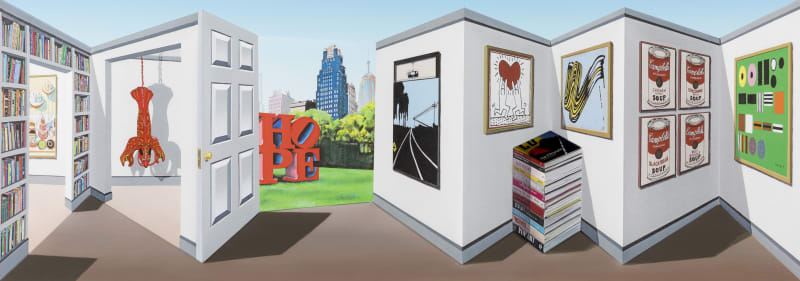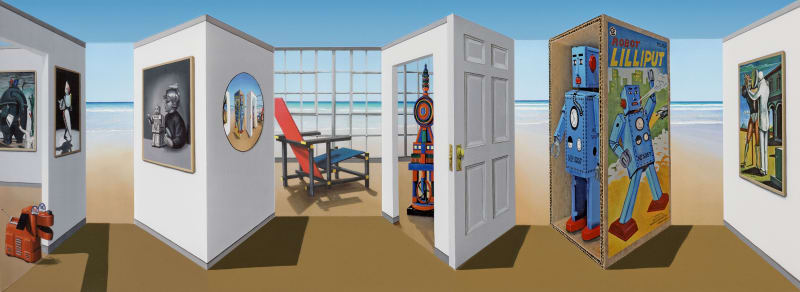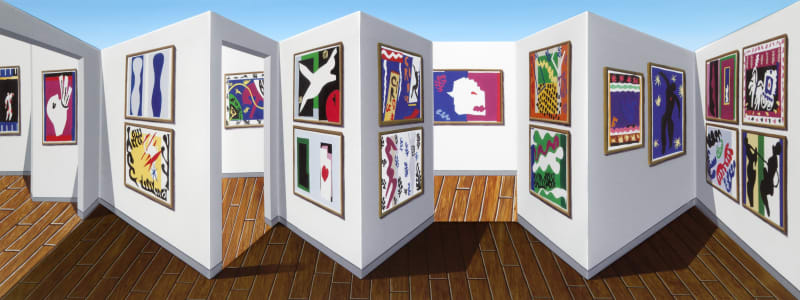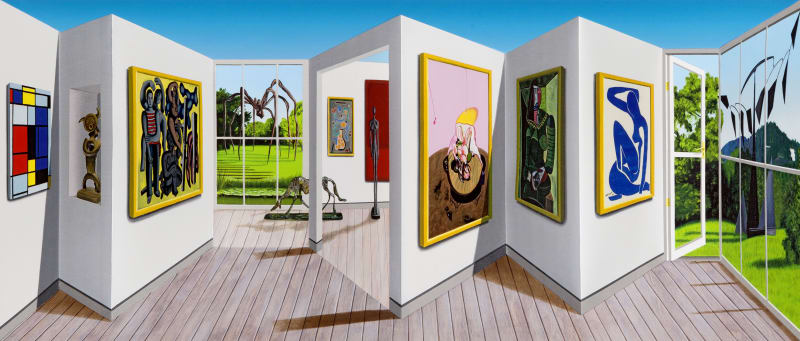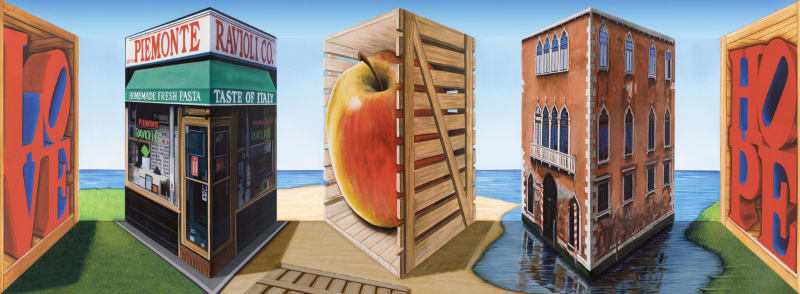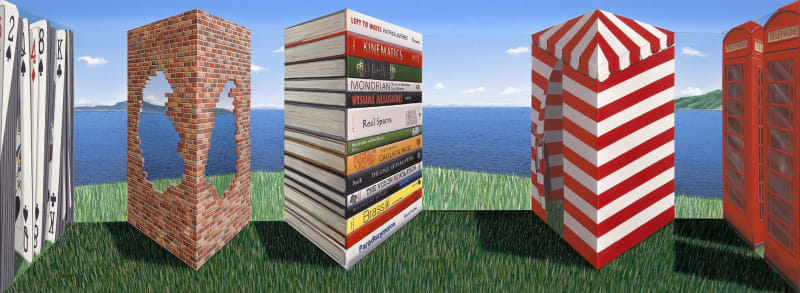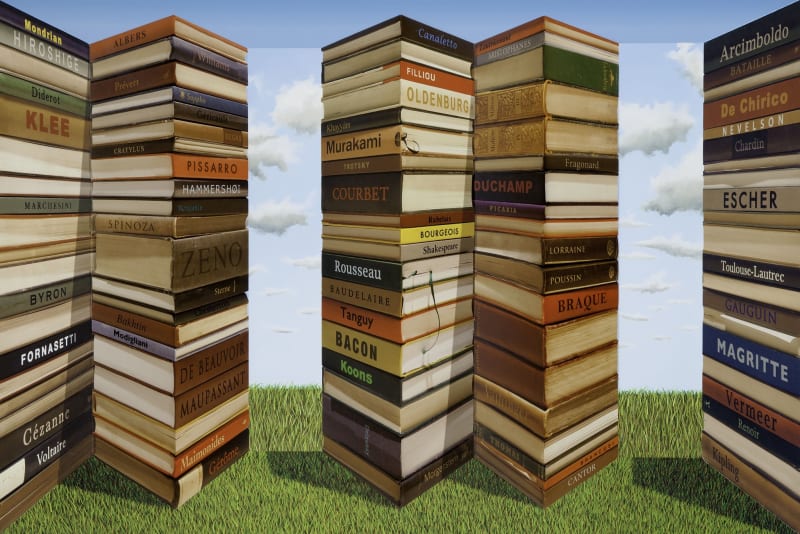
Patrick Hughes
Hues of Hughes
Overview
British artist Patrick Hughes has mastered perspective since making his first three-dimensional work in 1964. He is renowned for his 'reverspective' works, a neologism for reverse perspective, that create a disorientating, ‘moving’ experience, inevitably raising important questions about our perception and the subconscious.
In this viewing room we explore a selection of 'reverspective' multiples that showcase the recurring themes and signature rectilinear forms used to heighten the illusory impact of his works: gallery walls, buildings, books, doors which often open onto surreal landscapes, and recognisable works of art.
Patrick Hughes lives and works in London. His works are in collections including The British Library, the Tate Gallery and the British Academy in London; the Gallery of Modern Art, Glasgow; The Würth Museum, Künzelsau and the Baker Museum, Florida.

A common theme throughout Hughes' oeuvre is the construction of surreal gallery spaces populated with allusions to other artists, including Andy Warhol, Mark Rothko and Mondrian, among others. The images in Hughes' work are less about the history of art and more about accessible paintings and sculptures through which the viewer can engage with his work and that of the chosen subject. The featured artists become touchstones for his viewers to participate in his visual discourse on perspective, perception and vision.

"Venice was an accident. An interior designer, who at the time was redesigning the restaurant in the Waldorf Hotel in Aldwych, asked me to create a Venice reverspective. Initially I said no, I couldn’t do it. I couldn’t because it was far too complicated. And then the computer arrived. And when it came, we were able to scan in a picture, Photoshop it, arrange Venice into the right shape of the structure and then print it. At first, I couldn’t do this because the old fashioned way, when you square images up and sketch from a photograph, would take about six months. Now it doesn’t take long at all.
I particularly enjoy the Venice pieces because there is a lot of architectural detail in the palazzi and they reach all the way down to the water and water is a fluid, so it enables the piece to flow as you walk past it."

Although Hughes does not believe himself to be a surrealist, he recognises it as the most important art movement he's studied, most notably the philisophies of René Magritte. This reference can be seen in the doors that open up incongruently onto fields, oceans, mountains and landmarks. As the viewer moves around a piece, doors open and close, objects and buildings rotate, in turn revealing and concealing the landscapes and vistas beyond. "It could have been called ‘Imaginativism.’ It belongs to the realm of the imaginative. The Surrealist artists were all, like myself, devoted to being imaginative."
Hughes often compares this interactive viewing experience to reading books, another motif seen through his practice, each three-dimensional image transporting you to a different realm. "A book is like a door, and through the little door, like Alice, you can go to your own wonderland. Through the door you can go to the eighteenth-century or through the door you can become a woman. You can be anything once you open the door. The door leads to anywhere and allows you to become anyone or anything. I love the door because for me, as a child, the door enabled me to leave the horrible room that I was in. Outside my actual door was a butcher’s shop, but this door allowed me to go anywhere – to freedom."

"The thing I've come to realise is I'm not really interested in libraries or mazes or arcades and, come to think of it, I'm not actually interested in perspective. My real interest in the end, what I find sublime, is the flux and the flow of it all. The library and the perspective are just means of enabling the strange relationship between the spectator and the picture - that state of flux. I love the ineffable part of it, the motion and the movement - the reciprocal relation like there is between people having a conversation. That's the interesting thing - the dialogue. I'm not ultimately interested in skyscrapers or picture galleries, they are just means - not necessarily to an end, but I would rather say to a beginning. The beautiful thing to observe is when people are looking at them and moving and, I suppose, thinking and wondering."

For further information please enquire below.




